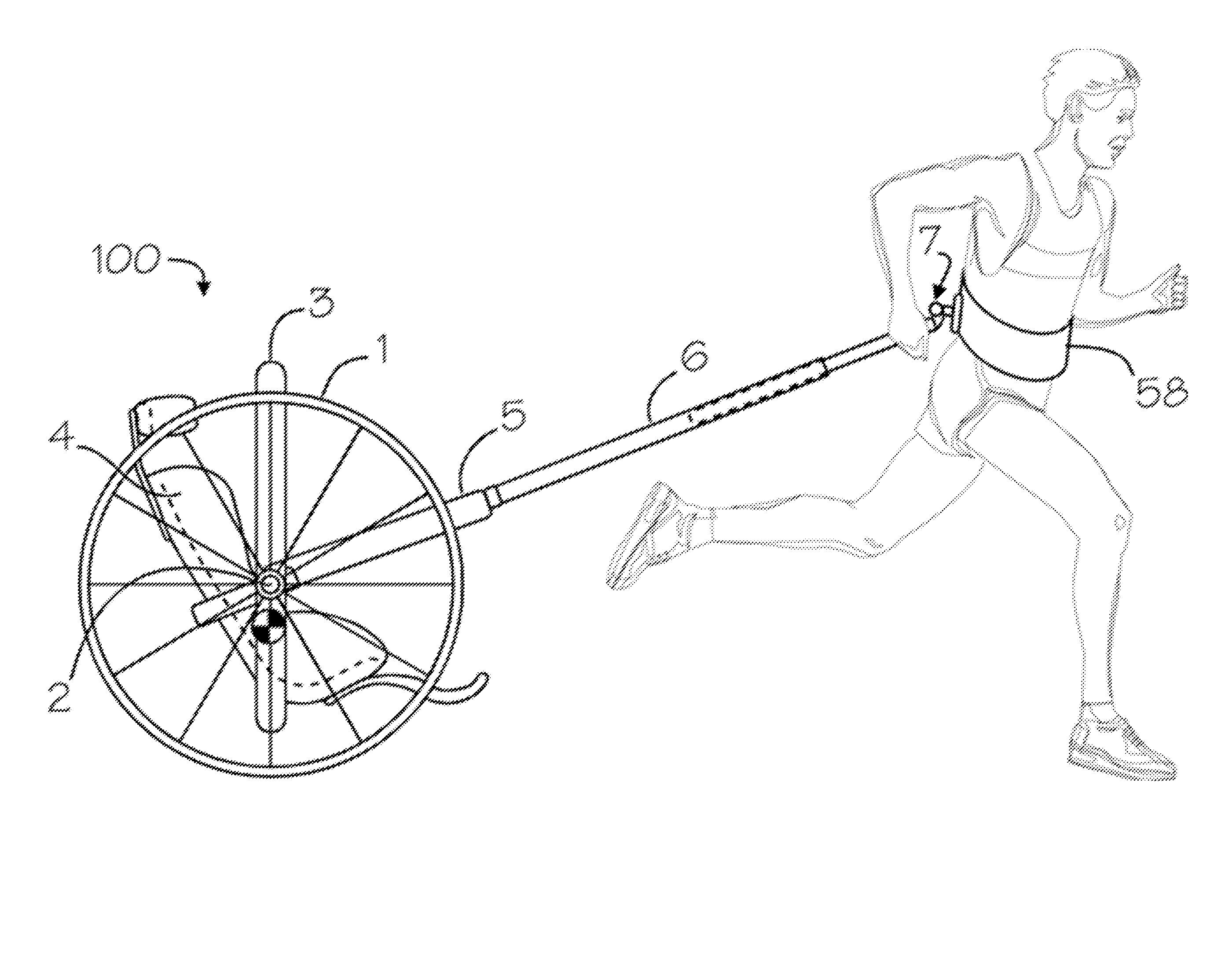Tow type running stroller
a stroller and running technology, applied in the field of strollers, can solve the problems of reducing the safety of the child and the attendant at higher travel speeds, reducing the safety of the child and the attendant, and lateral instability at the front end, so as to reduce the overall vertical load bearing, reduce the vertical movement, and attenuate the anterior/posterior
- Summary
- Abstract
- Description
- Claims
- Application Information
AI Technical Summary
Benefits of technology
Problems solved by technology
Method used
Image
Examples
Embodiment Construction
[0031]FIG. 1 illustrates a tow-type stroller being propelled and controlled by an attendant while the attendant is jogging. It should be understood, however, that embodiments of the present invention may also be beneficially used while the attendant is merely walking. Certain embodiments may also be configured to attach to a bicycle or other vehicle, so as to permit the attendant to bring a baby, small child or toddler along for the ride. As shown in FIG. 1, the stroller includes two wheels 1, each with a wheel hub 2, a carriage frame 3, a seat assembly 4 to accommodate a child occupant, a cross bar 5, a tow bar assembly 6, an articulating assembly 7, and a waist belt 8.
[0032]FIG. 2 depicts a carriage frame 3 provided with two supporting wheels 1 spaced apart along the wheel axis 9 in a direction laterally of the direction of movement of the carriage frame 3 where each of two wheel axle 10 means is secured directly to the carriage frame 3. Both wheel axle means 10 are coaxial to the...
PUM
 Login to View More
Login to View More Abstract
Description
Claims
Application Information
 Login to View More
Login to View More - R&D
- Intellectual Property
- Life Sciences
- Materials
- Tech Scout
- Unparalleled Data Quality
- Higher Quality Content
- 60% Fewer Hallucinations
Browse by: Latest US Patents, China's latest patents, Technical Efficacy Thesaurus, Application Domain, Technology Topic, Popular Technical Reports.
© 2025 PatSnap. All rights reserved.Legal|Privacy policy|Modern Slavery Act Transparency Statement|Sitemap|About US| Contact US: help@patsnap.com



